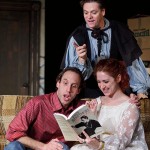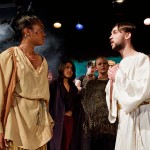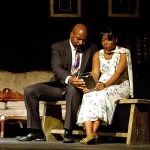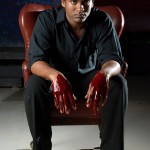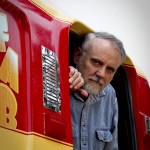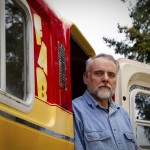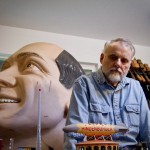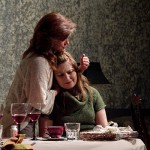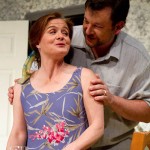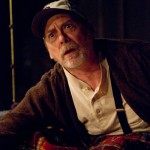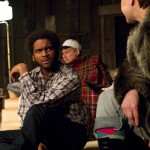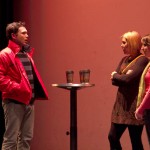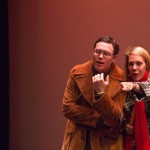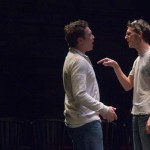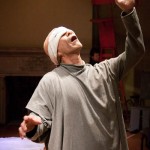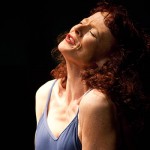Photography
Friday, June 17th, 2011
I recently took part in Theatre Bay Area‘s annual Vendor Conference in San Francisco where I had an opportunity to show my best work to the Theatre community. This facilitated a heavy edit of my current portfolio of theatrical images where I made selects and post-processed from scratch every show I’ve shot, from the beginning. It was a long process but the results were worth it, and it made me realized how much my taste, and ability to post-process an image, has changed. I used an X-Rite Eye-One Display 2 (tip: Pantone, GretagMacbeth, and X-Rite versions of this product are all the same thing) to calibrate my monitor so I could make sure that the colors displayed on my monitor, and eventually printed, were accurate, taking the guesswork out of the equation.
(tip: Pantone, GretagMacbeth, and X-Rite versions of this product are all the same thing) to calibrate my monitor so I could make sure that the colors displayed on my monitor, and eventually printed, were accurate, taking the guesswork out of the equation.
Having to edit many thousands of images down to about 100 to show at my table, and down to six to print large on my display, is not easy, and better left to professional editors, but just not feasibly in the budget for me so I had to fire up the coffeemaker and hunker down for about a week. As always, I used Photo Mechanic for it’s speed to make selects and add ratings, and then Adobe Photoshop Lightroom 3 to adjust exposure, tone, and color.
to adjust exposure, tone, and color.
I added Photo Mechanic to my workflow about a year ago because it’s just plain fast. I use it only for selection and rating–basically editing down a take to the best photos to then process and deliver. It is a huge time saver for me, because a single show will, on average, yield about 1000 – 1200 photos. Of those, only 40-60 will be delivered, and they need to be delivered fast. I’ve made it a policy to deliver selects within 24 hours; the clients need the photos to publicize the production on their website, Facebook, and send photos to news outlets.
Take a look at the newly edited (and ever-changing) portfolio here.
Posted in Hardware, Photography, Portfolio, Technical, Technology, Theatre, Workflow No Comments »
Monday, June 13th, 2011
“Firstborn” was originally a concept for a feature film that was adapted into a play, which premiered at the Black Repertory Group in Berkeley. It’s also where I discovered that focal lengths made for crop sensor cameras such as 17-50mm don’t work quote well for my style, even though I am shooting on a crop sensor camera – a Canon EOS 7D  . I’m almost never at the wide end , and sometimes I found myself wanting to be able to zoom in a little more for some tighter crops, even after using my legs to bring me as close as possible to the action.
. I’m almost never at the wide end , and sometimes I found myself wanting to be able to zoom in a little more for some tighter crops, even after using my legs to bring me as close as possible to the action.
Speaking of moving around, I always, always, shoot these productions during a dress rehearsal. I never shoot while a crowd is present. I believe that a theatre-goer’s experience is one that shouldn’t be marred by the clicking of a shutter, or a figure running around in the dark and jumping over seats. Usually, it’s the final dress rehearsal before the show opens or previews, because that’s when the set, wardrobe, and makeup is in place, and this naturally makes for the best photographs.
Notably, this play had some stage combat that I was somewhat prepared for; even though I had never seen a run-through, I did read the script, so I knew when an important bit of action was coming up. I always prefer to see a run through, but that’s actually a rare privilege, so in this case I just had to make sure to be a the ready.
See the whole set here.
Posted in Hardware, Photography, Production, Promotion, Technique, Theater, Theatre No Comments »
Tuesday, April 19th, 2011
I was asked to shoot “specials” for a modern-styled rendition of Julius Caesar. Specials are promotional photographs to be used in marketing materials before the production starts. The big difference with the specials is that usually, I will do the lighting in a studio space instead of using the stage lights. I’ve always been a big fan of of promo photographs because I feel that a prospective audience member is more likely to want to see a play when they can see, and connect with, actors in the production.
Take a look Broadway.com and you’ll see that the website is filled with photos that entice someone to buy a ticket to see a show. Another great example are movie posters–they almost always feature a photograph of the lead players to establish a connection for someone who is trying to decide which play or movie to see.
A special thanks to the director, cast, and crew of this show–this shoot was a lot of fun.
On a technical note, the battery in my ST-E2 wireless flash trigger went dead, and I didn’t have a spare. Luckily, we were in a small space and I just used the 7D’s built-in wireless flash control. Whew. I promptly bought spare batteries for the ST-E2.
I used some pretty simple tools to light these: One 430EX Speedlite on a light stand as a main light, One 420EX Speedlite as a backlight. I did not have umbrellas for this shoot–not because I forgot them, but because I didn’t own any. To diffuse and soften the main light, I used a fold-out reflector that has a removable cover that turns it into a giant diffuser, set up on its own stand. If I didn’t have something to diffuse the light, I would have bounced the light off of something–theatres always have prop doors or partitions laying around, so there’s a lot of ways to get creative to soften the light.
Posted in Hardware, Lighting, Photography, Portraits, Promotion, Technical, Technique, Theater, Theatre No Comments »
Thursday, February 10th, 2011
Portraits are by no means my specialty. But when given the chance to photograph Author C.D. Payne on the heels of the release of the film adaptation of his book, Youth in Revolt, I couldn’t really say no.
C.D. was gracious enough to let us into his home and let us capture him in his natural habitat, and shared with us his crafts and passions outside of writing. And of course, he did it all in front of the camera without batting an eye.
He recently released a new book, Invisibly Yours.
Posted in Photography, Portraits, Technique No Comments »
Friday, February 4th, 2011
I’ll lead off with the important part. You can buy Photo Mechanic right now for $60. I wouldn’t blame you if you didn’t read the rest of this post. But if you do by chance remember to come back here, it would be much appreciated.
Remember when you first got a digital camera, and importing that first group of 2 Megapixel photos to your computer’s 40Gb hard drive was magical because you didn’t have to deal with film?
Well, if you’re like most photographers nowadays, you have to deal with a day’s take of 500-1000 12 or 18 Megapixel RAW files. In addition, you have to review them, rate them, keyword them, and caption them. Then you have to upload them to an FTP server for a clients review, or place them into a web gallery, or export proofsheets and email them.
Well, I had gotten to a point where I had dreaded that potentially hours-long process. Then Zack Arias introduced me to Photo Mechanic. What used to take me anywhere from 3-4 hours in Lightroom (no offense Lightroom, I love you and you will forever be part of my workflow) took less than an hour when going through Photo Mechanic. I was initially skeptical about adding another piece of software to my workflow. Lightroom was revolutionary when it was released, but the time it took to render previews made the selection process slow to a crawl with the huge RAW files today’s cameras produce. Enter Photo Mechanic. I won’t go into specifics too much–you can always watch Zack’s video if you follow the link above if you want the nitty gritty, but essentially Photo Mechanic only deals with the RAW file’s embedded JPG preview, and consequently, it is fast. Crazy fast, even on the damn near ancient workstation where I do my selections.
Photo Mechanic is not for pixel pushing, or even making global adjustments. No curves, saturation, levels, healing brushes, dodging or burning. It’s for editing and sorting only, and when you see it in action, you’ll see why it’s the go-to tool for a majority of press photographers and newspapers in the country.
If you deal with hundreds or even thousands of pictures per assignment, and you want a lot of your time back, get it today for $60 instead of the regular price of $150.
Posted in Photography, Software, Workflow No Comments »
Friday, February 4th, 2011
Dinner with Friends is Donald Margulies’ Pulitzer Prize-winning work about a couple that re-evaluates their relationship after the the dissolution of their closest friends’ marriage. This production was put on by the Dreamweavers Troupe in Napa, a non-profit, volunteer run theatre company dedicated to producing quality shows in the Napa Valley.
The lighting at Dreamweavers has made it one of my favorite theaters in which to shoot; powerful and plentiful. And after remedying some storage shortages mentioned in a previous post, I was free to be as trigger happy as I wanted with the shutter. Which brings me to one of the main things that I try to practice: capturing the emotional height of a moment. Photographing a theatrical production requires a great deal of anticipation–trying to be where the puck is going to be as Wayne Gretzky puts it.
Even though I do make liberal use of the 7D’s eight frames per second, I only really use it as a safety mechanism so that I can choose from the single best shot of a series–not so I can show off all 30 frames from a burst. It helps me to make sure that I capture the moment–the moment that illustrates a special connection between actors, the moment where the action is at it’s peak. And in a play where movement is constant, and an inch of movement can mean losing multiple stops of light, that moment can literally be a fraction of a second. Eight frames per second helps, but it won’t move you to where the puck is going to be.
See the whole set here.
Posted in Photography, Production, Promotion, Technique, Theater, Theatre 1 Comment »
Tuesday, February 1st, 2011
Buried Child is a Pulitzer Prize-winning drama by Sam Shepard, and the first production I shot for a young production company, Bay Area Stage. The first thing that struck me before action was called was the amazing attention paid to set design, art direction, and construction. It was easily the best set I’ve seen on a production of this size (as of yet–Bay Area Stage has a tendency to top themselves time after time).
Because of the general mood and tone of the play, it was a fairly dark show. Especially a challenge when you depend on (and hope for) as much light as possible to make sharp, clear photographs. More than a few times, I had to bring my shutter speed way below my normal level of comfort and employ Joe McNally’s “Da Grip“. I wouldn’t have had nearly as many keepers had it not been for this technique.
The other issue I had was storage. I had 20Gb with me in CF cards and I damn near ran out of space. the 7D makes huge raw files, anywhere from 23Mb to 32Mb in size, and in any given show I will snap the shutter 900-1000 times. I didn’t have a choice but to switch to JPG in the last few scenes. Luckily I did a custom white balance before the show and really concentrated on metering as accurately as possible, so all was well. But I’ll admit I was sweating shooting in JPG and not having the cushion of RAW. Still, I captured everything I wanted to, and I could see a marked improvement in exposure accuracy, composition, and my ability to click at “the moment” over the last couple of shows.
Either way, one of the bigger lessons here is that storage is cheap, and you should definitely invest in as much of it as you can.
See the whole set here.
Posted in Photography, Production, Promotion, Technique, Theater, Theatre 1 Comment »
Thursday, December 30th, 2010
Working with new production companies is exciting because there is a little extra of that intangible drive and excitement in everything they do. Lucky Penny Productions out of Napa is one such company. Having started in 2009, they have since put on 5 productions (and counting!), and they allowed me to shoot their production of Neil Labute’s play “The Shape of Things” at the Napa Valley Opera House.
Anyone that’s ever been to the NVOH knows that it is a huge place, but this production was a little different. Lucky Penny had the audience on the stage for an intimate performance, which made for an especially unique connection with the characters in the play. Keep your eye on Lucky Penny Productions for future shows!
See the whole set here.
Posted in Photography, Production, Promotion, Theater, Theatre No Comments »
Thursday, December 23rd, 2010
I had a chance to shoot Helen Pau’s original play, “The Stone Wife” at the Berkeley City Club. The challenge of this show was that it was theater-in-the-round, which meant that I had to cover the performers from 360 degrees. In addition, I had to do so in a very confined space.
I was allowed to shoot an early dress rehearsal as a test run and to get familiarized with the actors’ blocking so I could make sure I was in the right spots at the right times to capture the best of the performances. The prep shoot helped quite a bit–the first time around I found myself photographing the actors’ backs more than I would like to admit. It was definitely one of the bigger challenges I’ve faced so far, because even though the performance was happening in a relatively small space, there was a lot of movement to keep up with.
After seeing the performance and getting to test shoot it once, I found that I was better prepared by the time the final dress rehearsal came around and all makeup, wardrobe, set pieces, and lights were in place. The director and producers were happy with the results.
See the whole set here.
Need photos for your theatrical production? Booking information.
Questions, comments, or just want to be social? Get in touch.
Tags: bay area theater photographer, bay area theatre photography, benicia theater photographer, benicia theater photography, benicia theatre photographer, benicia theatre photography, berkeley theater photographer, berkeley theater photography, berkeley theatre photographer, berkeley theatre photography, best theater photography, best theatre photography, east bay theater photographer, east bay theater photography, east bay theatre photographer, east bay theatre photography, fairfield theater photographer, fairfield theater photography, fairfield theatre photographer, fairfield theatre photography, napa theater photographer, napa theater photography, napa theatre photographer, napa theatre photography, original plays, photography, san francisco theater photographer, san francisco theater photography, san francisco theatre photographer, san francisco theatre photography, san jose theater photographer, san jose theater photography, san jose theatre photographer, san jose theatre photography, solano county theater photographer, solano county theater photography, solano county theatre photographer, solano county theatre photography, theater, theater in the round, theater photographer, theater photography, theatre, theatre photographer, theatre photography, top theater photographer, top theatre photographer
Posted in Actors, Photography, Portfolio, Production, Promotion, Technique, Theater, Theatre No Comments »
(tip: Pantone, GretagMacbeth, and X-Rite versions of this product are all the same thing) to calibrate my monitor so I could make sure that the colors displayed on my monitor, and eventually printed, were accurate, taking the guesswork out of the equation.
to adjust exposure, tone, and color.
